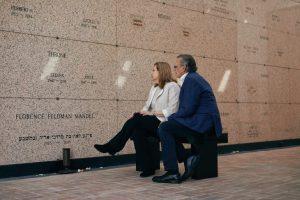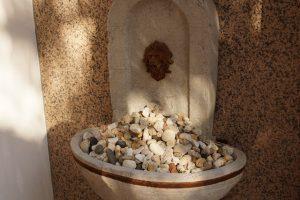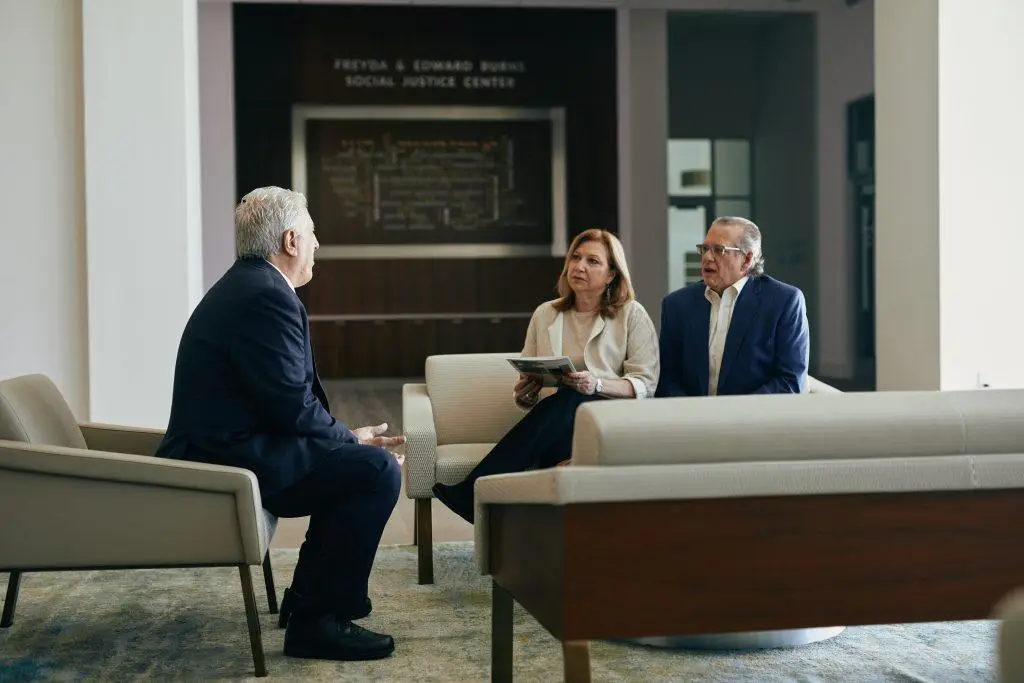Jewish Graves: Stones of Remembrance

The History of Visitation Stones
There are many interpretations offered about the Jewish burial practice of leaving visitation stones, and all of them share many common elements.
Ancient Jewish Burials
 With Jews being a nomadic people often traveling through arid terrain, visitors to Jewish gravesites may have chosen to leave stones, which were more readily at hand than flowers and plants in rocky or desert regions. In ancient times long before caskets were in common use, the body was prepared, washed and wrapped in a burial shroud. For a male, it was common to wrap him in his tallis (prayer shawl). Due to this type of environment, most burials were in shallow graves that necessitated covering the deceased with dirt, then stones and rocks in order to complete the process and to prevent animals from preying on the body. In all likelihood, this was the precursor to the practice of placing stones at graves as a Jewish burial ritual.
With Jews being a nomadic people often traveling through arid terrain, visitors to Jewish gravesites may have chosen to leave stones, which were more readily at hand than flowers and plants in rocky or desert regions. In ancient times long before caskets were in common use, the body was prepared, washed and wrapped in a burial shroud. For a male, it was common to wrap him in his tallis (prayer shawl). Due to this type of environment, most burials were in shallow graves that necessitated covering the deceased with dirt, then stones and rocks in order to complete the process and to prevent animals from preying on the body. In all likelihood, this was the precursor to the practice of placing stones at graves as a Jewish burial ritual.A Warning to Kohanim
Another theory is that during the First Temple period (1200-586 BC), Jews began marking graves with piles of rocks as a way of warning passing Jewish priests known as “Kohanim” that they should stay back. The reason for this is that they would become ritually impure if they came within 4-feet of a corpse.
Souls, Demons & Golems
Depending upon interpretation, the Talmud suggests that after a person dies, his or her soul continues to dwell in their grave. Ancient Jews believed that placing the stone on a grave would keep the soul down in this world. Some people find comfort in this. Another interpretation leaning more toward superstition, suggests the opposite, that the stones can keep evil spirits, demons and golems from getting into the graves.
Twelve Stones & The Children of Israel
Some think that the origin of this practice could also correlate to the story in the Bible where God commands Joshua to create a memorial in Jordan comprising of 12 stones that would represent the children of Israel forever. Perhaps this symbolic stone representation may have been later associated with the practice of leaving pebbles and rocks on the headstones of the dead.
The Meaning of the Hebrew Word Tz'ror
The Hebrew word for “pebble” is tz’ror – and it happens that this Hebrew word also means “bond.” When we pray, we often ask that the deceased be “bound up in the bond of life.” By putting a stone on a gravesite, we not only indicate our visit to that grave, but that the deceased’s memory continues to live on through us.
Leaving Stones of Remembrance at the Beth El Mausoleum

He continues, “Leaving stones of remembrance on a grave is an ancient Jewish tradition with several interpretations. The one I like most is that it represents putting down or removing the burden of mourning so that when one leaves the cemetery or in our case, the Mausoleum, one can go on with their life feeling a little lighter, stronger and happier for having visited their loved one.”
How to Choose a Stone of Remembrance
 The stones can be as small as a pebble…as large as a golf ball…or even larger. Sometimes cemeteries provide them – but not always. It is best to be prepared and bring your stone or stones along for your visit. As to where to get them….anywhere you can find them from your garden to possibly somewhere significant to you or to the deceased. Commercially manufactured or personalized stones, as well as Jerusalem stones from Israel are also available for purchase.
The stones can be as small as a pebble…as large as a golf ball…or even larger. Sometimes cemeteries provide them – but not always. It is best to be prepared and bring your stone or stones along for your visit. As to where to get them….anywhere you can find them from your garden to possibly somewhere significant to you or to the deceased. Commercially manufactured or personalized stones, as well as Jerusalem stones from Israel are also available for purchase.Here at the Beth EL Mausoleum and Temple Beth El of Boca Raton in addition to upholding this long-standing tradition, we offer many other ways to continue to honor your loved one’s memory. Contact Mike Sirowitz, our Mausoleum Director at 561-391-8901, to learn more about benches in the interior and exterior of the mausoleum, each with an inscription, Bronze vases, personalized with the person’s name and a memorial phrase and personalized leaves on our Tree of Remembrance at the Mausoleum. For leaves on the Tree of Life in the Temple’s grand hallway or Yahrzeit Plaques in the Merle E. Singer Sanctuary, contact the temple at 561-391-8900.



